Abstract
The purpose of this study was to evaluate importance and performance of dietitian's task at long term care hospitals foodservices in the Busan·Kyongnam area. The research was performed through using questionnaires and conducted from June 11 to July 16, 2010 for 186 dietitians at 141 long-term care hospitals. Seventy-two percent of hospitals had two dietitians and 69% of them had a dietitian's office. Fifty-two percent of dietitians has worked for less than 2 years at long term care hospital, and 37.1% of them worked additional tasks. Seventy-three percent of hospitals conducted a therapeutic diet program and the therapeutic diets frequently provided were diabetic diet > tube feeding diet > dysphasia diet > sodium controlled diet. Mean score for the importance (4.36/5.00) and performance (3.91/5.00) of dietitian's tasks were significantly different (p < 0.001). The importance and performance grid showed that the purchase-inspection management and sanitation-safety management were high scores to the importance and performance (doing great area), menu-foodservice management and cooking-working management were low scores to the importance and high scores to the importance (overdone area), and nutrition management was low scores to the importance and performance (low priority). Forty-three percent of dietitians agreed with the needs for role separation between foodservice dietitian and clinical dietitian.
Figures and Tables
References
1. American Dietetic Association (ADA). Position of the American Dietetic Association : Nutrition, aging and the continuum of care. J Am Diet Assoc. 2000. 100(5):580–595.
2. Chang HJ. Strategies for the improvement of customer satisfaction on foodservice through identifying the foodservice quality factors in senior care facilities. Korean J Community Nutr. 2008. 13(1):69–79.
3. Chao S, Hagisavas V, Mollica R, Dwyer JT. Time for assessment of nutrition services in assisted living facilities. J Nutr Elder. 2003. 23(1):41–55.
4. Chao SY, Dwyer JT. Food and nutrition services in assisted living facilities : Boon or big disappointment for elder nutrition? Generations. 2004. 28(3):72–77.
5. Chao SY, Houser RF, Tennstedt S, Jacques P, Dwyer JT. Food and nutrition care indicators: experts' views on quality indicators for food nutrition services in assisted-living facilities for older adults. J Am Diet Assoc. 2007. 107(9):1590–1598.
6. Cho EH, Jang HJ, Kwak TK. Analysis of job activities and demand of dietitian in the elderly health-care facilities. J Korean Diet Assoc. 2006. 12(4):313–328.
7. Choi BS, Kwon SY. Analysis of meal service menu for elderly of local community centers. J Natural Sci Catholic University of Daegu. 2005. 3(1):115–125.
8. Gilbride JA, Simko HD. Role functions of dietitians in New York State nursing homes. J Am Diet Assoc. 1986. 86(2):222–227.
9. News Release on the medical evaluation. Health Insurance Review & Assessment Service. 2010. cited 2010 Aug 15. Available from http://www.hira.or.kr.
10. Hong SY, Seo SH. Job performance frequency and education needs of dieticians in the elderly healthcare facilities. J Korean Diet Assoc. 2010. 16(2):160–177.
11. Jeong SY. Investigation of foodservice and nutrition management practices for improving foodservice quality at welfare institutions for the elderly. 2008. Seoul Womens' University;138–147. MS thesis.
12. Lee MJ, Lee YK. Effects of job characteristics, job performance and organizational community on job satisfaction of hospital dietitians in the Taegu·Kyungpook area. Korean J Community Nutr. 2000. 5(4):672–682.
13. Lee MY. A study of patients' satisfaction on foodservice qualit of elderly hospitals. 2009a. Kunsan National University;30–35. MS thesis.
14. Lee SH. Multi-level analysis of factors related to quality of services in long-term care hospitals. J Korean Acad Nurs. 2009b. 39(3):409–421.
15. Medical raw. Ministry for Health, Welfare and Family Affairs. 2008. cited 2008 Feb 29. Available form http://www.mw.go.kr.
16. Ryu JG. A study on factors in selecting recuperation hospital of aging society. J Mark Manage Res. 2006. 11(2):101–130.
17. Seo YJ, Oh JY. Determinants of job satisfaction among workers at elderly care hospitals. Korean J Hosp Manage. 2008. 13(2):64–85.
18. Shin AR. A study on the satisfaction of hospitalized patients for the food service quality. 2007. Ulsan University;8–15. MS thesis.
19. Yoon HR, Kwon J. The importance-satisfaction study of hospital foodsevice encounters at the elderly-care facilities. J Korean Diet Assoc. 2009. 15(3):209–219.




 PDF
PDF ePub
ePub Citation
Citation Print
Print


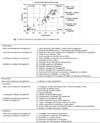
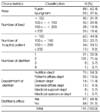
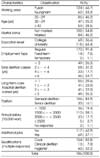
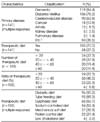
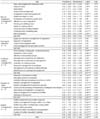
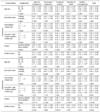

 XML Download
XML Download